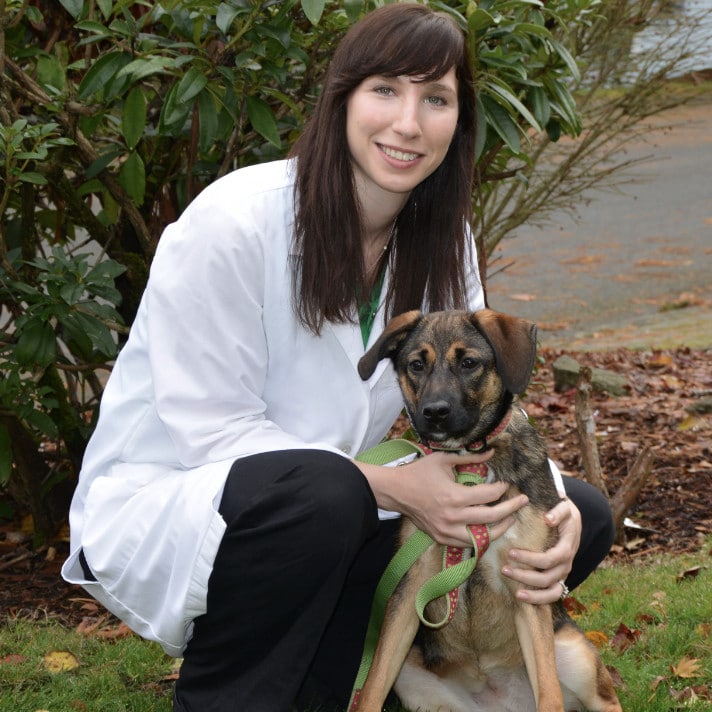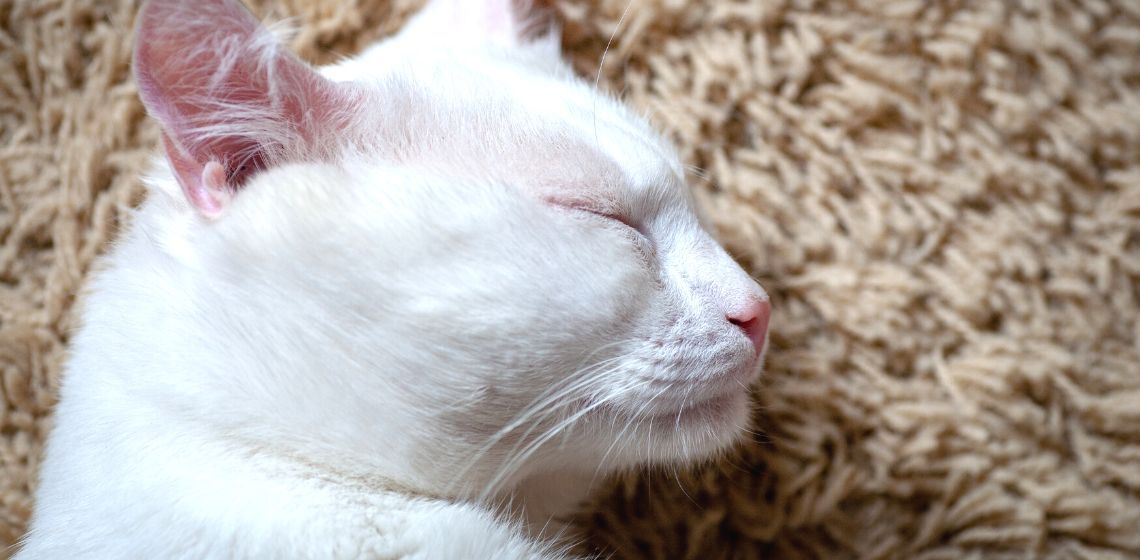Table of Contents
What Is a Cat Tooth Abscess?
A tooth root abscess is a severe bacterial infection and accumulation of pus, that develops around the root of a damaged or diseased tooth.
Cat Tooth Abscess Symptoms
Cats are masters at hiding signs of illness or discomfort; however, if your cat has a tooth root abscess, you may notice the following clinical signs:
- Mouth pain – For example, pawing or rubbing at the mouth, difficulty chewing, chewing on one side of the mouth, preferring soft food over kibble, dropping food when eating, changes in behavior, and shying away from touch.
- Halitosis (bad breath)
- An obviously diseased or injured tooth – If your cat lets you look in its mouth, you may see evidence of a fractured tooth or redness and swelling along the gum line.
- External swelling – Depending on the location of the tooth root abscess, the most noticeable sign may be swelling on the cheek or under the eye. In some cases, the abscess may rupture and ooze blood or pus.
- Systemic signs – If the disease progresses, you may notice additional signs of disease, such as loss of appetite and lethargy.
Causes of Cat Tooth Abscess
When a tooth is broken or diseased, bacteria can enter the root canal leading to infection and inflammation. This bacteria then exit the apex of the root, spreading into surrounding bone and tissues.
Learning the basic anatomy of a tooth will help you understand how bacteria may enter the tooth leading to an abscess.
- Enamel – an extremely hard substance that covers and protects the crown of the tooth
- Dentin – another hard surface below the enamel that forms the bulk of the tooth
- Pulp cavity – the inner part of the tooth composed of blood vessels and nerves
- Crown – the visible portion of the tooth above the gum line
- Root – the portion of the tooth below the gumline. At the bottom of the root is the apical delta, where nerves and vessels enter and exit the pulp cavity.
- Cementum – the hard surface covering the tooth root
- Surrounding structures – the teeth are held in place by bone, ligaments, and soft tissue
Like other animals, cats can develop various types of dental disease, the most common of which include:
Fractured Tooth
Cats can fracture teeth by chewing on hard objects or due to trauma (for example, injury from a cat fight). If the pulp cavity is exposed, bacteria can easily enter, leading to infection and potential abscess. While any tooth can be fractured, common locations for tooth fracture in cats are the large upper fourth premolars and the canine teeth.
Periodontal Disease
Periodontal disease is a broad description that includes diseases of the structures that surround and support the teeth. As the disease progresses, plaque/tarter builds up on the teeth, the gums become inflamed, and eventually, the bone around the teeth is destroyed, leading to loose teeth and infection.
Feline Odontoclasitc Resorptive Lesions
Tooth resorption is extremely common in cats, and occurs when the tooth is gradually eroded. These lesions are painful and require extraction of the affected tooth.
How is a Tooth Root Abscess Diagnosed?
Your vet may be suspicious of a tooth root abscess based on history and physical exam. In order to definitively diagnose the abscess and determine which tooth it is associated with, they will need to perform a dental exam and dental x-rays under anesthesia.
Treatment for Cat Tooth Abscess
A tooth root abscess will be treated with antibiotics, anti-inflammatories, and pain medications. The underlying dental disease must also be addressed, which almost always involves extraction of the affected tooth. In some cases, the tooth may be saved by referral to a veterinary dentist for a root canal. Tooth extraction occurs under anesthesia. Be sure to follow all discharge instructions from your vet to care for your cat during the recovery period.
Preventing Dental Issues in Cats
Dental disease is extremely common in our furry family members, and most cats will need multiple dental cleanings under anesthesia with a vet during their lifetime. Some cats are simply more predisposed to dental issues than others. However, there are ways that you can care for your cat’s teeth at home which may help decrease the frequency that these procedures are needed.
- Daily brushing – Daily brushing is the best way to help prevent periodontal disease in pets. However, many of our feline friends will not tolerate this. If you are interested in brushing your cat’s teeth, work slowly to get them used to the process by breaking it into small manageable steps and using lots of positive reinforcement.
- Dental products recommended by the Veterinary Oral Health Council – From water additives to dental chews or treats, these products have the seal of approval.
- Dental diet – While feeding kibble vs. wet food will not affect your cat’s dental health, there are certain prescription veterinary diets that can make a difference. Talk to your vet if you are interested in this option.
No, a tooth root abscess will not heal on its own and will continue to get worse. Not only is there a risk of infection spreading elsewhere in the body, but an abscess and the associated underlying dental disease can be extremely painful for your cat. If you are concerned about a tooth root abscess, prompt veterinary care is indicated.
While not technically an emergency, the pain and infection associated with this condition make prompt treatment critical. Your vet may start treating your cat with antibiotics, anti-inflammatories, and pain medications until they can fit them in for a dental and tooth extraction.
If left untreated long-term, infection from a tooth root abscess may spread to the rest of the body, affecting major organs and leading to severe illness or even death.

Liza is a veterinarian who graduated from MSU CVM in 2013 and spent five years working in small animal practice. She loved working with dogs and cats and educating owners on all aspects of veterinary medicine, especially animal behavior and dermatology. She has since transitioned to remote work to be able to spend more time at home with her husband, two young kids, and two cats. She is thrilled to be able to combine her passions for veterinary medicine and writing. She is licensed as a veterinarian in Washington State.








